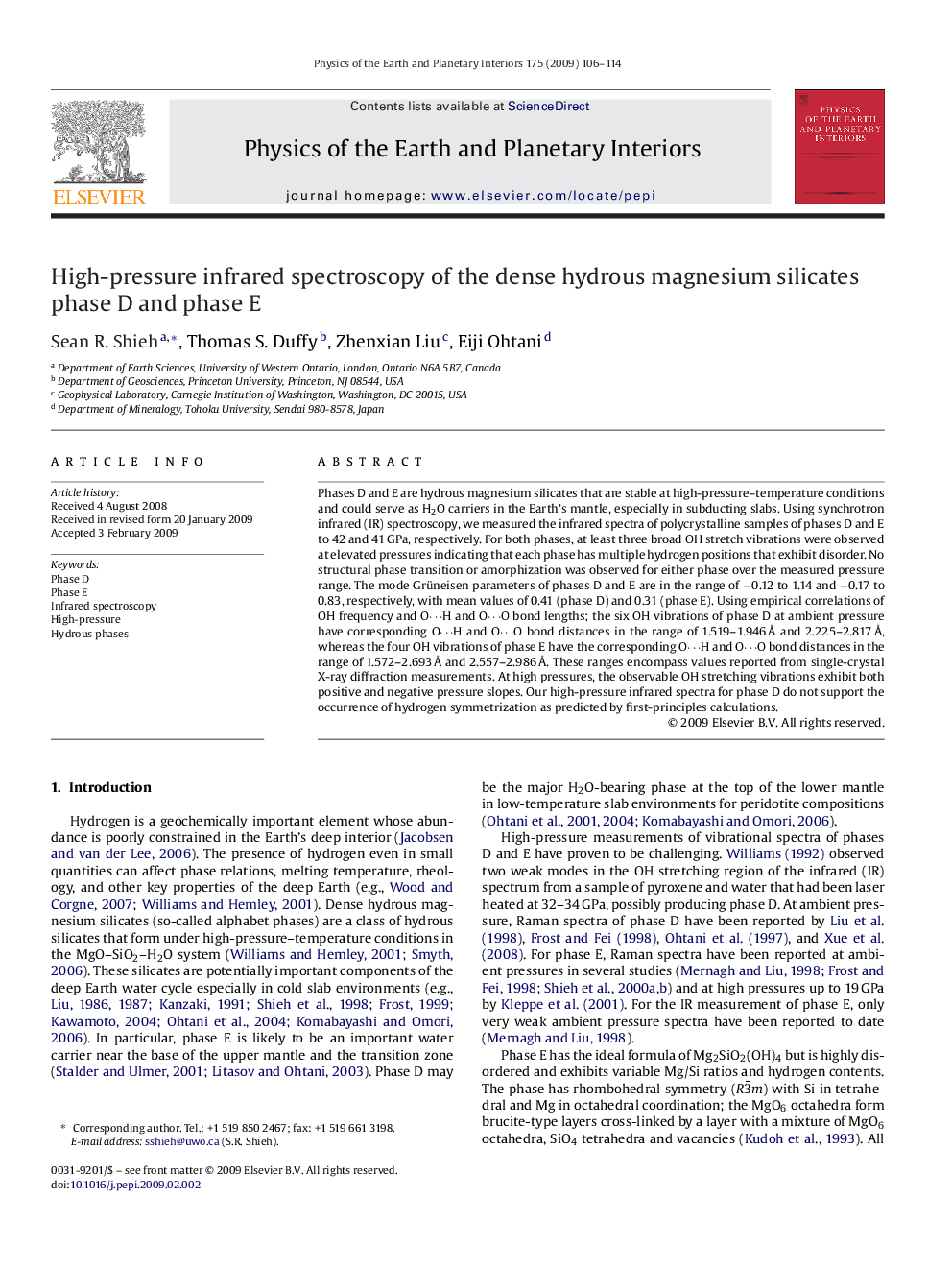| Article ID | Journal | Published Year | Pages | File Type |
|---|---|---|---|---|
| 4742288 | Physics of the Earth and Planetary Interiors | 2009 | 9 Pages |
Phases D and E are hydrous magnesium silicates that are stable at high-pressure–temperature conditions and could serve as H2O carriers in the Earth's mantle, especially in subducting slabs. Using synchrotron infrared (IR) spectroscopy, we measured the infrared spectra of polycrystalline samples of phases D and E to 42 and 41 GPa, respectively. For both phases, at least three broad OH stretch vibrations were observed at elevated pressures indicating that each phase has multiple hydrogen positions that exhibit disorder. No structural phase transition or amorphization was observed for either phase over the measured pressure range. The mode Grüneisen parameters of phases D and E are in the range of −0.12 to 1.14 and −0.17 to 0.83, respectively, with mean values of 0.41 (phase D) and 0.31 (phase E). Using empirical correlations of OH frequency and O⋯H and O⋯O bond lengths; the six OH vibrations of phase D at ambient pressure have corresponding O⋯H and O⋯O bond distances in the range of 1.519–1.946 Å and 2.225–2.817 Å, whereas the four OH vibrations of phase E have the corresponding O⋯H and O⋯O bond distances in the range of 1.572–2.693 Å and 2.557–2.986 Å. These ranges encompass values reported from single-crystal X-ray diffraction measurements. At high pressures, the observable OH stretching vibrations exhibit both positive and negative pressure slopes. Our high-pressure infrared spectra for phase D do not support the occurrence of hydrogen symmetrization as predicted by first-principles calculations.
